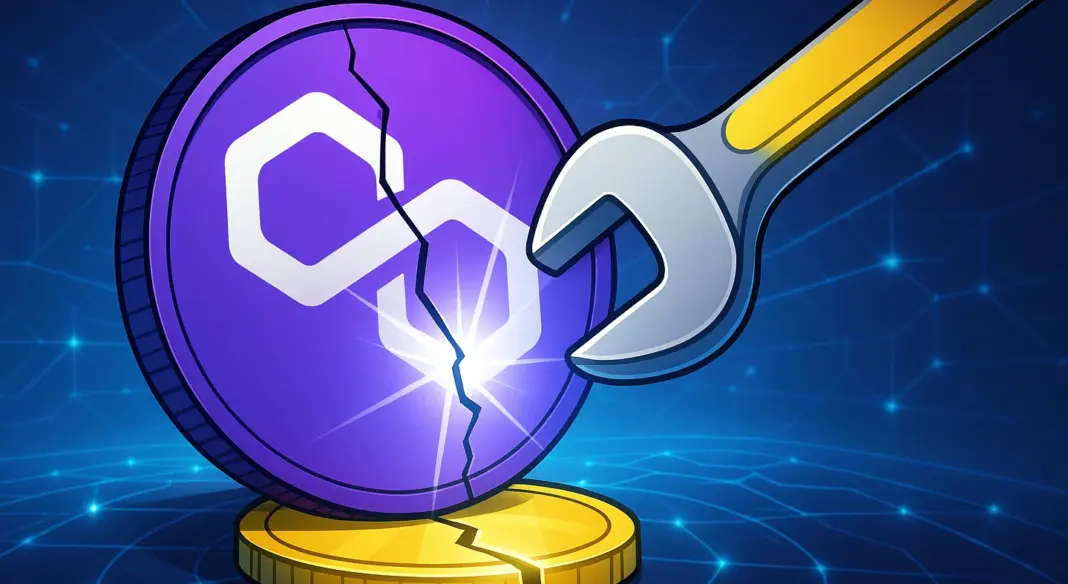Ah, Polygon, the digital workhorse of Ethereum’s scaling world, hit a rough patch this week.
A single buggy validator proposal caused some Bor and RPC nodes to lose their way, forcing Polygon to pause the show with delayed milestones and offline nodes.
But don’t worry, Polygon’s crew swooped in with a hard fork, and now checkpoints, milestones, and network finality are back on track better than ever.
Stay ahead in the crypto world – follow us on X for the latest updates, insights, and trends!🚀
Freeze
Early Wednesday a software glitch in Bor, Polygon’s block producer and Erigon, its data access layer clogged up some parts of the network.
I mean clogged up big time. Imagine a bunch of busy cashiers suddenly frozen at the register, blocks kept producing, but some of the system’s validators and RPC services just said hold up, rewound to their last confirmed block, and scrambled to catch up.
Polygonscan froze too, no updates for over five hours evening out the suspense. Turns out the fault lay with Heimdall, Polygon’s consensus engine, which mistakenly produced a faulty milestone.
This milestone broke the rhythm of fast, deterministic finality, those rapid checkpoints that make transactions feel instant.
Although Ethereum itself kept receiving normal checkpoints every 20 minutes, Polygon’s local finality took a nasty hit, leaving transactions hanging in limbo.
Pains of scaling
Polygon’s engineers didn’t waste a second. They rolled out emergency fixes, upgrading Bor which required a hard fork.
The fork scrubbed the milestone from existence and rebooted the system. Within minutes, Polygon confirmed that consensus finalized smoothly again, with milestones and checkpoints operating like a well-oiled machine.
UPDATE:
The hard fork has been successfully completed, and milestones are now processing normally along with state sync. Checkpoints are going through and consensus finalization has been fully restored on Polygon PoS.
We will continue to monitor the network closely to ensure… https://t.co/UwiAYdcKXu
— Polygon Foundation (@0xPolygonFdn) September 10, 2025
Sandeep Nailwal, Polygon’s co-founder and CEO, explained that the glitch pushed some nodes onto conflicting forks, causing brief chaos.
He called it the growing pains of scaling, a reminder that big ambitions come with occasional bumps. But every challenge, he says, just bulk-ups Polygon’s resilience.
Challenges and resilience
Still, the outage shook confidence briefly. Polygon’s token POL dipped 4% amid the disruption and currently trades down about 30% this year.
TVL on Polygon has slumped from a peak of $9.43 billion in 2021 to $1.2 billion today, signaling lingering worries on network stability.
So yes, Polygon stumbled but didn’t fall. It faced a bug that broke rhythm but bounced back with a hard fork and quick fixes.
The road to scaling Ethereum is full of challenges, and Polygon’s story reminds us that resilience isn’t always about flawless runs.
Disclosure:This article does not contain investment advice or recommendations. Every investment and trading move involves risk, and readers should conduct their own research when making a decision.
Kriptoworld.com accepts no liability for any errors in the articles or for any financial loss resulting from incorrect information.
Cryptocurrency and Web3 expert, founder of Kriptoworld
LinkedIn | X (Twitter) | More articles
With years of experience covering the blockchain space, András delivers insightful reporting on DeFi, tokenization, altcoins, and crypto regulations shaping the digital economy.
📅 Published: September 12, 2025 • 🕓 Last updated: September 12, 2025
✉️ Contact: [email protected]


